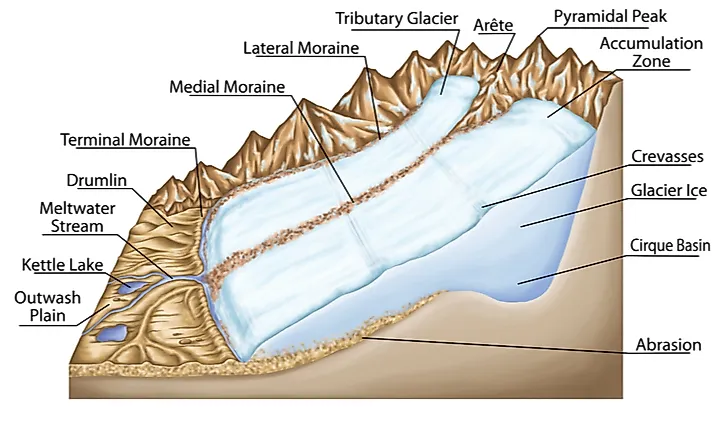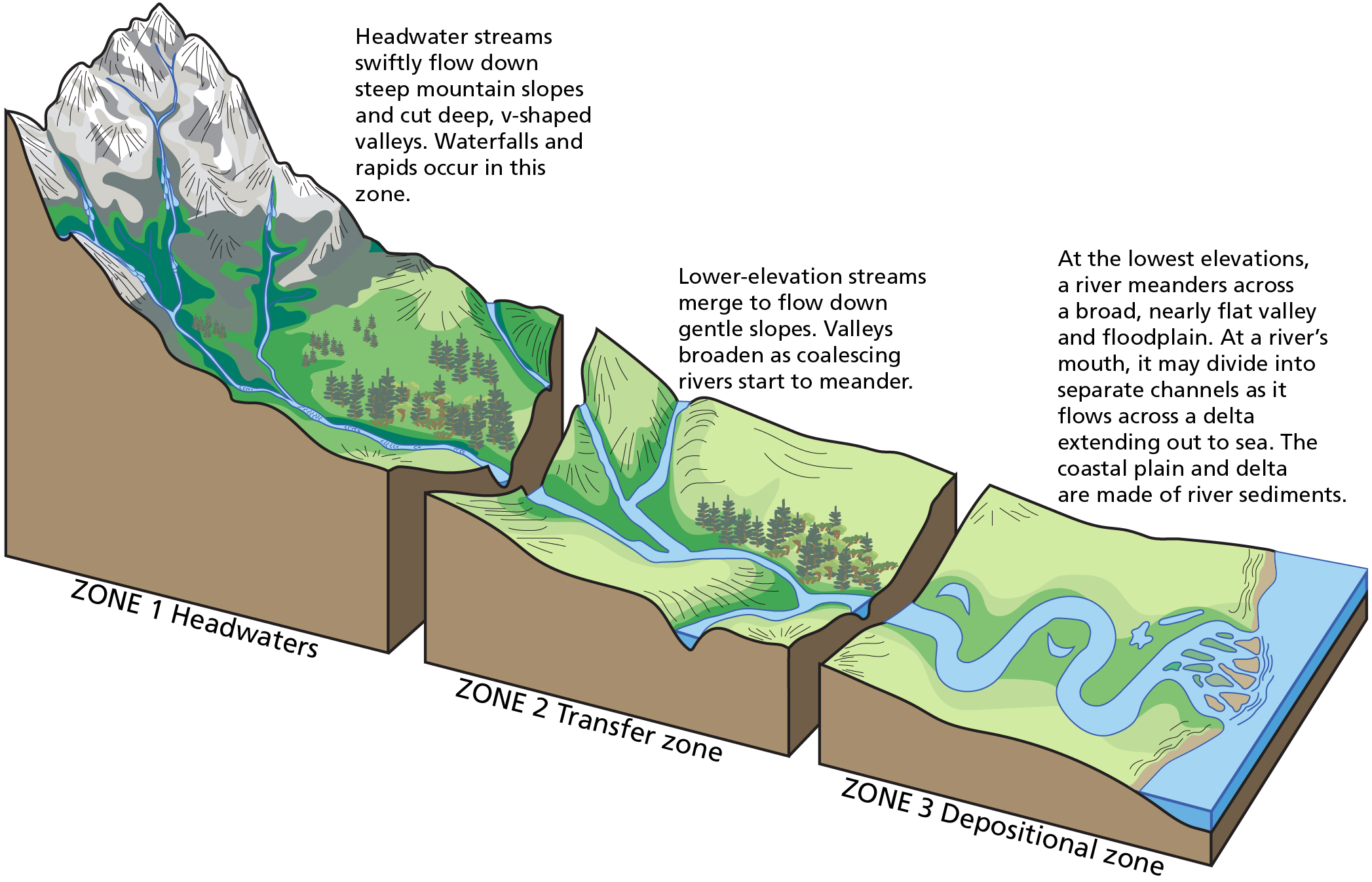A number of ways of. What are 3 depositional landscapes.

Types Of Depositional Landforms
Erosional and Depositional Coasts.

. What is sedimentary environments and their classification. Depositional plains It is of five types. They can be both currently as well as the formerly glaciated regions of earth.
These plains are formed by the deposition of sediments brought down by rivers. Are formed by a combination of erosion transportation. This is particularly the case where constructive waves are prevalent or where there is an abundant amount of beach material supplied.
The beach is the area between the lowest spring tide level and the point reached by the storm waves in the highest tides. Examples are- Mississippi delta Lomb-ardi plains Italy formed by Po river Yangtze plain China Indus plain Ganga USA plain Sacramento Russia Samarkand South America Chile plain Amazon plain Salween and Mekong plains. The Indo Gangetic plain Indian sub-continent.
The flow of the river will take the path of least resistance and will flow through the straight line. Sedimentary structures include features like bedding ripple marks fossil tracks and trails and mud cracks. Landforms of Coastal Deposition.
The main depositional features of the glacial landscapes are. The former of these is recognized as deposition whereas the latter is known as erosion. Coastal deposition is when the sea drops or deposits material.
Coastal landforms of deposition occur where the accumulation of sand and shingle is greater than it is removed. They are formed through the geomorphological process. Truncated delta On the basis of growth.
There are three types of Moraines. Arcuate delta Arcuate delta is triangular in shape. 1 Meanders developed through lateral erosion normal meanders 2 Meanders developed by vertical erosion or valley deepening incised meanders and 3 Misfit or unfit meander is also identified as the third type of meanders.
Is the material that has fallen onto the side of a glacier and carried along by it. On the basis of shape. These are the glacially formed accumulation of unconsolidated glacial debris.
Depositional landforms are the visible evidence of processes that have deposited sediments or rocks after they were transported by flowing ice or water wind or gravity. 173 Landforms of Coastal Deposition. Outer edges are like an arc of a circle or a bow.
So the water is tries to erode through the bend. How many types of deposition are there. Coastal deposition is when the sea drops or deposits material.
The formation of rock-strewn reg surfaces has resulted in the removal of finer material by wind. Beaches and associated features. Examples of landforms that are obvious in deserts are rock pedestals Yardangs Desert pavements Deflation hollows Oasis and Sand dunes.
Landforms created by deposition Deposition occurs when the sea has less energy eg in sheltered bays. Some coastal areas are dominated by erosion an example being the Pacific coast of Canada and the United States while others are dominated by deposition examples being the Atlantic and Caribbean coasts of the United States. In the previous articles we were discussing various types of endogenic and exogenic processesWe have also seen that erosion and deposition are some of the exogenic processes.
Eventually it will actually cut through. This can include sand sediment and shingle resulting in landforms of coastal deposition. Berms runnels and cusps.
Where erosion is the dominant process the. So any water pushed into the old meander is going very slowly. In this post we are dealing with the geomorphic agents running water and groundwater which causes erosion and depositionThey form various erosional destructional.
Cirque and cirque lake Horns and Serrated ridges Arêtes Glacial valleys troughs Hanging valley. A landform created when material is deposited by the sea. On the basis of shape.
Terminal Moraine is deposited by the glacier at the snout as it retreats. Examples include beaches deltas glacial moraines sand dunes and salt domes. Is material carried in the middle of the glacier.
Look at the location map of coastal landscapes in. Some examples of alluvial plains are. This results in the formation of landforms of coastal deposition.
The plains formed by the filling up of sediments carried by agents of Erosion like wind rivers glaciers and underground water into depressions are called Depositional plains. This can include sand sediment and shingle. Another approach to coastal classification is to consider whether coastal processes in the coastal zone are primarily contributing sediment to the coastline or whether they are removing sediment from the coastline.
Meanders are divided into two major types on the basis of the nature of fluvial erosion eg. Depositional landforms are formed by the Fragments of soil regolith and bedrock that are removed from the parent rock and deposited somewhere else. The wind also plays an important role in moving and reshaping dunes.
But on almost all coasts both deposition and erosion are happening to varying degrees most of the time. Types of glacier. The sedimentary environment is the specific depositional setting of a particular sedimentary rock and is unique in terms of physical chemical and biological characteristics.
Riverine or alluvial plains are formed by river deposits. Glacial till Outwash deposits and plains Moraines Terminal lateral and ground moraineseskerdrumlins Nunatak roche moutonne.

Types Of Depositional Landforms

Geography Extreme Landscapes Desert Depositional Features

Glacial Erosion And Deposition Earth Science

A List Of Glacial Depositional Features Or Landforms Worldatlas

Erosion And Deposition By Glaciers Ck 12 Foundation

River Systems And Fluvial Landforms Geology U S National Park Service

5 5 Depositional Environments And Sedimentary Basins A Practical Guide To Introductory Geology
0 comments
Post a Comment